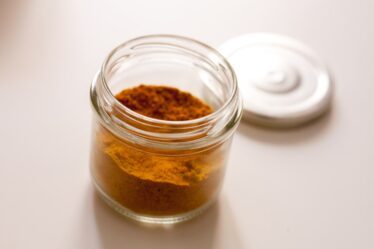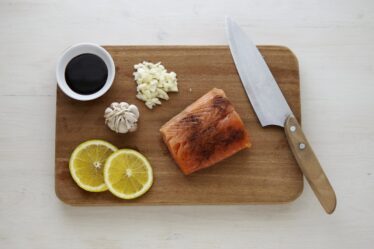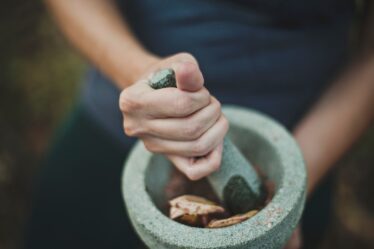
French Tarragon, also known as Artemisia dracunculus, is a perennial herb that is native to Europe and Asia. It is widely recognized for its unique flavor and aroma, which has made it a staple in the culinary world. French Tarragon is a member of the sunflower family and is characterized by its long, slender leaves and delicate yellow flowers.
French Tarragon has been used in cooking for centuries and is highly regarded for its ability to enhance the flavors of dishes. Its distinct taste is often described as a combination of licorice, anise, and pepper, which adds depth and complexity to a wide range of recipes. This versatile herb can be used in both savory and sweet dishes, making it a favorite among chefs and home cooks alike.
One of the most intriguing characteristics of French Tarragon is its ability to retain its flavor even when dried. Unlike many other herbs, French Tarragon maintains its distinct taste and aroma when dried, making it a convenient option for year-round use. Its versatility and unique flavor profile have made French Tarragon an essential ingredient in cuisines around the world.
Key Takeaways
- French Tarragon is a versatile herb with a rich history and culinary uses.
- Its flavor and aroma are delightful and can enhance the taste of many dishes.
- French Tarragon is also a nutritious herb with health benefits.
- Growing and harvesting French Tarragon requires some tips and tricks.
- French Tarragon can be used in cooking, pairing with other herbs and spices, and even in drinks and cocktails.
The History of French Tarragon and Its Culinary Uses
French Tarragon has a rich history that dates back thousands of years. It is believed to have originated in Siberia or western Asia and was brought to Europe by the Mongols during their conquests. The herb quickly gained popularity in France, where it was cultivated by monks in their gardens.
French Tarragon has played a significant role in culinary traditions throughout history. In ancient times, it was used as a medicinal herb to treat various ailments, including digestive issues and toothaches. Over time, its culinary uses became more prominent, and it became a staple in French cuisine.
French Tarragon is widely used in French cooking, where it is often paired with fish, poultry, and vegetables. It is a key ingredient in classic French sauces such as Béarnaise and Hollandaise, adding a distinct flavor and aroma to these dishes. In addition to its use in French cuisine, French Tarragon is also popular in Mediterranean and Middle Eastern cooking, where it is used to flavor soups, stews, and marinades.
The Flavor and Aroma of French Tarragon: A Delightful Experience
The flavor profile of French Tarragon is truly unique and adds a delightful twist to any dish. It has a subtle licorice-like taste with hints of anise and pepper, which gives it a distinct and refreshing flavor. The herb’s flavor is best described as delicate and slightly sweet, making it a versatile addition to both savory and sweet recipes.
The aroma of French Tarragon is equally enticing. When fresh, the herb has a strong, fragrant scent that is reminiscent of licorice. This aroma intensifies when the leaves are crushed or chopped, releasing the herb’s essential oils and enhancing its flavor.
To identify high-quality French Tarragon, look for bright green leaves that are free from blemishes or discoloration. The leaves should be firm and have a strong aroma when crushed. Avoid purchasing dried tarragon that has lost its vibrant green color or has a weak scent, as this indicates that the herb has lost its potency.
Health Benefits of French Tarragon: A Nutritious Herb
| Health Benefits of French Tarragon: A Nutritious Herb |
|---|
| Rich in antioxidants |
| May help regulate blood sugar levels |
| May aid in digestion |
| May have anti-inflammatory properties |
| May help improve sleep quality |
| May help reduce anxiety and stress |
| May have antibacterial properties |
| May help improve heart health |
In addition to its culinary uses, French Tarragon also offers several health benefits. It is rich in vitamins and minerals, including vitamin A, vitamin C, calcium, and iron. These nutrients contribute to overall health and well-being.
French Tarragon also contains several compounds that have been shown to have medicinal properties. It is believed to have anti-inflammatory properties, which can help reduce inflammation in the body and alleviate symptoms of conditions such as arthritis. Additionally, French Tarragon has been used traditionally to aid digestion and relieve stomach discomfort.
Consuming French Tarragon can also support a healthy immune system. The herb contains antioxidants, which help protect the body against free radicals and oxidative stress. This can help boost the immune system and reduce the risk of chronic diseases.
Growing and Harvesting French Tarragon: Tips and Tricks
French Tarragon is a relatively easy herb to grow, but it does require specific conditions to thrive. It prefers full sun or partial shade and well-drained soil. The herb is sensitive to cold temperatures, so it is best grown in regions with mild winters.
To plant French Tarragon, start with young plants or root divisions rather than seeds. Plant them in the spring after the last frost, spacing them about 12 inches apart. Water the plants regularly, but be careful not to overwater, as this can cause root rot.
Harvesting French Tarragon is a simple process. The leaves can be harvested throughout the growing season by snipping them off with scissors or pruning shears. It is best to harvest the leaves in the morning when their essential oils are most concentrated. Avoid harvesting more than one-third of the plant at a time to ensure its continued growth.
Cooking with French Tarragon: Recipes and Ideas

French Tarragon is a versatile herb that can be used in a wide range of dishes. Its unique flavor pairs well with fish, poultry, vegetables, and even desserts. Here are a few popular recipes that showcase the versatility of French Tarragon:
1. Béarnaise Sauce: This classic French sauce is made with egg yolks, butter, vinegar, and fresh tarragon. It is typically served with steak or roasted vegetables and adds a rich and tangy flavor to the dish.
2. Chicken Tarragon: This simple yet flavorful dish features chicken breasts cooked in a creamy tarragon sauce. The herb adds a subtle licorice flavor to the dish, complementing the creamy sauce perfectly.
3. Tarragon Ice Cream: This unique dessert combines the delicate flavor of tarragon with creamy ice cream. The herb is infused into the ice cream base, creating a refreshing and unexpected twist on a classic treat.
Pairing French Tarragon with Other Herbs and Spices
French Tarragon pairs well with a variety of other herbs and spices, enhancing their flavors and adding depth to dishes. Some complimentary herbs and spices for French Tarragon include:
– Parsley: The fresh, bright flavor of parsley complements the licorice-like taste of tarragon, creating a well-balanced combination.
– Chives: Chives add a mild onion flavor to dishes and pair well with the delicate taste of tarragon.
– Lemon zest: The citrusy aroma of lemon zest adds a refreshing twist to dishes that feature tarragon.
When using French Tarragon in recipes, it is important to balance its flavors with other ingredients. The herb can be overpowering if used in excess, so it is best to start with small amounts and adjust to taste. Experimenting with different combinations of herbs and spices can help create unique and flavorful dishes.
French Tarragon in Drinks and Cocktails: A Unique Twist
French Tarragon is not limited to culinary uses; it can also be used to add a unique twist to drinks and cocktails. Its distinct flavor and aroma can elevate the taste of beverages, creating refreshing and unexpected combinations.
One popular way to use French Tarragon in drinks is by infusing it into simple syrup. To make tarragon-infused simple syrup, combine equal parts water and sugar in a saucepan and heat until the sugar dissolves. Add a handful of fresh tarragon leaves and let the mixture simmer for a few minutes. Remove from heat and let it cool before straining out the tarragon leaves. The resulting syrup can be used to sweeten cocktails, lemonades, or iced teas.
French Tarragon can also be muddled or used as a garnish in cocktails. Its unique flavor pairs well with gin, vodka, and citrus-based drinks. Try adding a sprig of tarragon to a classic gin and tonic or muddle it with lime and sugar for a refreshing twist on a mojito.
Preserving French Tarragon: Drying and Freezing Techniques
To preserve French Tarragon for long-term use, there are several techniques that can be used, including drying and freezing.
Drying French Tarragon is a simple process that involves hanging the herb upside down in a well-ventilated area. Once the leaves are dry and brittle, they can be crumbled and stored in an airtight container. Dried tarragon can be used in recipes that call for the herb, but keep in mind that the flavor may be slightly less potent than fresh tarragon.
Freezing French Tarragon is another option for preserving the herb. To freeze tarragon, wash and dry the leaves thoroughly, then chop them into small pieces. Place the chopped tarragon in an ice cube tray and fill each compartment with water or olive oil. Once frozen, transfer the tarragon cubes to a freezer bag or container for long-term storage. Frozen tarragon can be added directly to recipes without thawing.
When storing French Tarragon, it is important to keep it in an airtight container away from light and moisture. This will help preserve its flavor and aroma for an extended period.
Embrace the Versatile Delight of French Tarragon
French Tarragon is a versatile herb that adds a unique flavor and aroma to a wide range of dishes. Its delicate licorice-like taste and fragrant aroma make it a favorite among chefs and home cooks alike. Whether used in savory dishes, desserts, or drinks, French Tarragon has the ability to elevate the flavors and create a delightful culinary experience.
By understanding the history, flavor profile, and health benefits of French Tarragon, as well as learning how to grow, harvest, and preserve it, you can fully embrace the versatility of this delightful herb. So go ahead and experiment with French Tarragon in your cooking and drinks, and discover the endless possibilities that this herb has to offer.
If you’re a fan of French tarragon herbs, you might also be interested in learning about the secrets of Champagne grapes. Unlocking the Secrets of Champagne Grapes is an intriguing article that delves into the fascinating world of these unique grapes and their role in creating the beloved sparkling wine. Discover the history, cultivation techniques, and the distinct flavors that make Champagne grapes so special. To read more about it, check out this article on Flavorful Sips.



